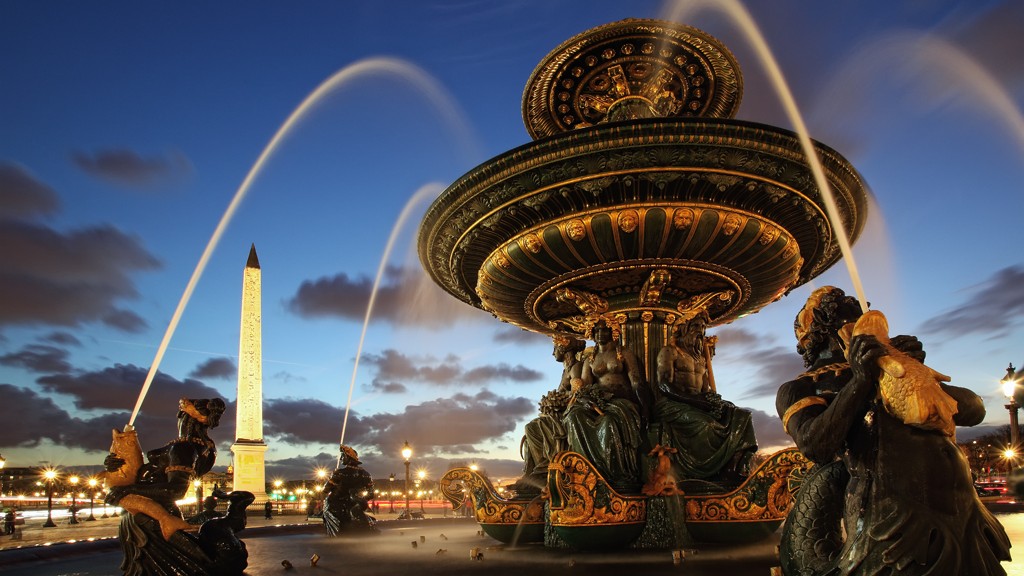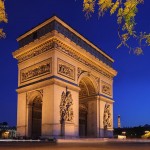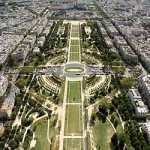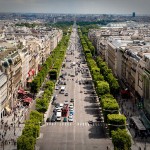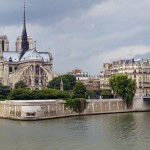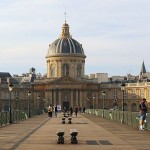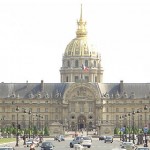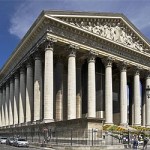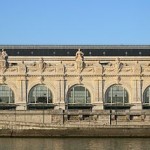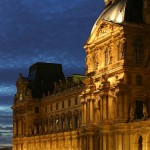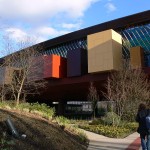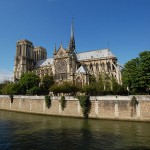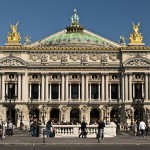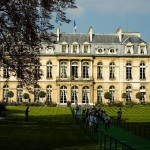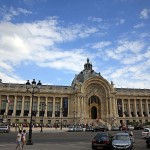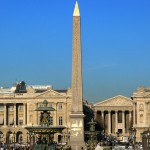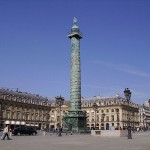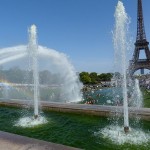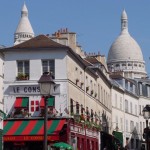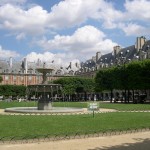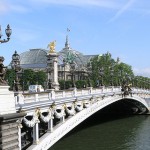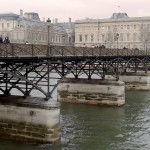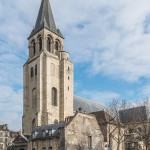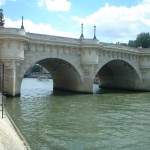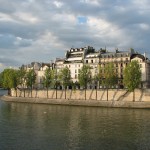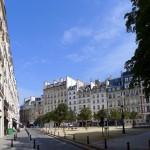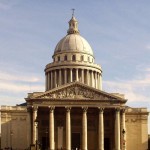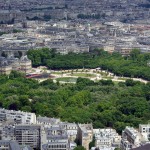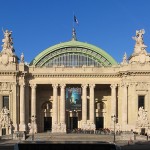2CVParisTour : Sightseeing Paris Tours by 2CV! What to see when visiting Paris by 2CV?
Welcome to 2CVParisTour! Here, we know Paris very well and we always try to improve our 2CV tours. A lot of beautiful places, unforgettable monuments and secrets are awaiting in the capital.
From the Eiffel Tower to Montmartre, we made you a quick list of the marvelous things you can see during a 2CV sightseeing tour with 2CVParisTour.
Our “LEGENDARY PARIS TOUR”, for example, focuses on the following 30 monuments and places.
-
Arc de Triomphe
-
Champs-Elysées
-
Invalides
-
The Church of Madeleine
-
The Louvre Museum
-
Musée Quai Branly
-
Opéra Garnier
-
Petit Palais
-
Concorde
-
Place Vendôme
-
Trocadéro
-
Pont des Arts
-
Saint Germain des Prés
-
Grand Palais
1 ) The Arc de Triomphe :
The Arc de Triomphe de l’Étoile is one of the most famous monuments in Paris. It stands in the centre of the Place Charles de Gaulle (originally named Place de l’Étoile), at the western end of the Champs-Élysées.
2 ) The Champs de Mars :
The Champ de Mars is a large public greenspace in Paris, located in the seventh arrondissement, between the Eiffel Tower to the northwest and the École Militaire to the southeast.
3 ) The Champs-Elysées :
The Avenue des Champs-Élysées is a street in Paris. With its cinemas, cafés, luxury specialty shops and clipped horse-chestnut trees, the Champs-Élysées is arguably one of the world’s most famous streets, and is one of the most expensive strips of real estate in the world.
4 ) The Grand Palais :
The Grand Palais des Champs-Elysées, commonly known as the Grand Palais is a large historic site, exhibition hall and museum complex located at the Champs-Élysées in the 8th arrondissement of Paris.
5 ) The Ile de la Cité :
The Île de la Cité is one of two remaining natural islands in the Seine within the city of Paris (the other being the Île Saint-Louis). It is the centre of Paris and the location where the medieval city was refounded.
6 ) The Institut de France :
The Institut de France is a French learned society, grouping five académies, the most famous of which is the Académie française. The Institute, located in Paris, manages approximately 1,000 foundations, as well as museums and châteaux open for visit.
7 ) The Invalides :
Les Invalides, officially known as L’Hôtel national des Invalides, is a complex of buildings in the 7th arrondissement of Paris, France, containing museums and monuments, all relating to the military history of France, as well as a hospital and a retirement home for war veterans, the building’s original purpose.
8 ) La Madeleine :
L’église de la Madeleine or Madeleine Church is a Roman Catholic church occupying a commanding position in the 8th arrondissement of Paris.
9 ) The Musée d’Orsay :
The Musée d’Orsay is a museum in Paris, on the left bank of the Seine. It is housed in the former Gare d’Orsay, a Beaux-Arts railway station built between 1898 and 1900. The museum holds mainly French art dating from 1848 to 1915, including paintings, sculptures, furniture, and photography. It houses the largest collection of impressionist and post-impressionist masterpieces in the world.
10 ) The Musée du Louvre :
The Louvre or Louvre Museum is one of the world’s largest museums and a historic monument. A central landmark of Paris, it is located on the Right Bank of the Seine in the 1st arrondissement.
11 ) The Musée du Quai Branly :
The Musée du quai Branly is a museum in Paris, that features indigenous art, cultures and civilizations from Africa, Asia, Oceania, and the Americas.
12 ) Notre-Dame de Paris :
Notre-Dame de Paris, also known as Notre-Dame Cathedral or simply Notre-Dame, is a historic Catholic cathedral on the eastern half of the Île de la Cité in the fourth arrondissement of Paris.
13 ) The Opéra Garnier :
The Palais Garnier is a 1,979-seat opera house, which was built from 1861 to 1875 for the Paris Opera. It was originally called the Salle des Capucines because of its location on the Boulevard des Capucines in the 9th arrondissement of Paris, but soon became known as the Palais Garnier in recognition of its opulence and its architect, Charles Garnier.
14 ) The Palais de l’Elysée :
The Palais de l’Élysée is the official residence of the President of the French Republic, containing his office, and is where the Council of Ministers meets. It is located near the Champs-Élysées in the 8th arrondissement of Paris, the name Élysée deriving from Elysian Fields, the place of the blessed dead in Greek mythology.
15 ) The Petit Palais :
The Petit Palais is a museum in Paris. Built for the Universal Exhibition in 1900 to Charles Girault’s designs, it now houses the City of Paris Museum of Fine Arts.
16 ) The Place de la Concorde :
The Place de la Concorde is one of the major public squares in Paris. Measuring 8.64 hectares in area, it is the largest square in the French capital. It is located in the city’s eighth arrondissement, at the eastern end of the Champs-Élysées.
17 ) The Place Vendôme :
Place Vendôme is a square in the 1st arrondissement of Paris, located to the north of the Tuileries Gardens and east of the Église de la Madeleine. Its regular architecture by Jules Hardouin-Mansart and pedimented screens canted across the corners give the rectangular Place Vendôme the aspect of an octagon. The original Vendôme Column at the center of the square was erected by Napoleon I to commemorate the battle of Austerlitz.
18 ) The Trocadéro :
The Trocadéro, site of the Palais de Chaillot, is an area of Paris, in the 16th arrondissement, across the Seine from the Eiffel Tower. The hill of the Trocadéro is the hill of Chaillot, a former village.
19 ) Montmartre
Montmartre is a hill in the north of Paris. It is 130 metres high and gives its name to the surrounding district, in the 18th arrondissement, a part of the Right Bank. Montmartre is primarily known for the white-domed Basilica of the Sacré Cœur on its summit and as a nightclub district. The other, older, church on the hill is Saint Pierre de Montmartre, which claims to be the location at which the Jesuit order of priests was founded. Many artists had studios or worked around the community of Montmartre such as Salvador Dalí, Amedeo Modigliani, Claude Monet, Piet Mondrian, Pablo Picasso and Vincent van Gogh.
20 ) Place des Vosges
The Place des Vosges is the oldest planned square in Paris and one of the finest in the city. It is located in the Marais district, and it straddles the dividing-line between the 3rd and 4th arrondissements of Paris.
21 ) The Alexandre III Bridge
The Pont Alexandre III is a deck arch bridge that spans the Seine in Paris. It connects the Champs-Élysées quarter and the Invalides and Eiffel Tower quarter. The widely regarded as the most ornate, extravagant bridge in the city. It is classified as a French Monument historique.
22 ) The Pont des Arts
The Pont des Arts or Passerelle des Arts is a pedestrian bridge which crosses the River Seine. It links the Institut de France and the central square (cour carrée) of the Palais du Louvre, (which had been termed the “Palais des Arts” under the First French Empire).
23 ) Saint Germain des Prés District
Saint-Germain-des-Prés is an area of the 6th arrondissement, located around the church of the former Abbey of Saint-Germain-des-Prés. Home to a number of famous cafés, such as Les Deux Magots and Café de Flore, the Saint-Germain-des-Prés area was the center of the existentialist movement (associated with Jean-Paul Sartre and Simone de Beauvoir).
24 ) Saint Sulpice Place
The large public space at the Place Saint Sulpice, which is dominated on its eastern side by the church of Saint-Sulpice, was built in 1754 as a tranquil garden in the Latin Quarter of the 6th arrondissement of Paris.
25 ) Pont Neuf
The Pont Neuf is the oldest standing bridge across the river Seine. Its name, which was given to distinguish it from older bridges that were lined on both sides with houses, has remained. It stands by the western point of the Île de la Cité, the island in the middle of the river that was the heart of medieval Paris.
26 ) Dauphine Place
The Place Dauphine is a public square located near the western end of the Île de la Cité in the first arrondissement. It was initiated by Henry IV in 1607, the second of his projects for public squares in Paris, the first being the Place Royale (now the Place des Vosges). He named it for his son, the Dauphin of France and future Louis XIII, who had been born in 1601.
27 ) The Saint Louis Isle
The Île Saint-Louis is one of two natural islands in the Seine river. It is connected to the rest of Paris by four bridges to both banks of the river, and to the Île de la Cité by the Pont Saint-Louis. This island was formerly used for the grazing of market cattle and stocking wood. One of France’s first examples of urban planning, it was mapped and built from end to end during the 17th-century reigns of Henri IV and Louis XIII. A peaceful oasis of calm in the busy Paris centre
28 ) The Panthéon
The Panthéon is a building in the Latin Quarter. It was originally built as a church dedicated to St. Genevieve and to house the reliquary châsse containing her relics but, after many changes, now functions as a secular mausoleum containing the remains of distinguished French citizens.
29 ) The Luxembourg Garden
The Jardin du Luxembourg, or the Luxembourg Gardens, is the second largest public park in Paris, located in the 6th arrondissement of Paris, France. The park is the garden of the French Senate, which is itself housed in the Luxembourg Palace.
And last but not least…
The Eiffel Tower!
The Eiffel Tower is an iron lattice tower located on the Champ de Mars in Paris. It was named after the engineer Gustave Eiffel, whose company designed and built the tower. Erected in 1889 as the entrance arch to the 1889 World’s Fair, it has become both a global cultural icon of France and one of the most recognizable structures in the world.
or

